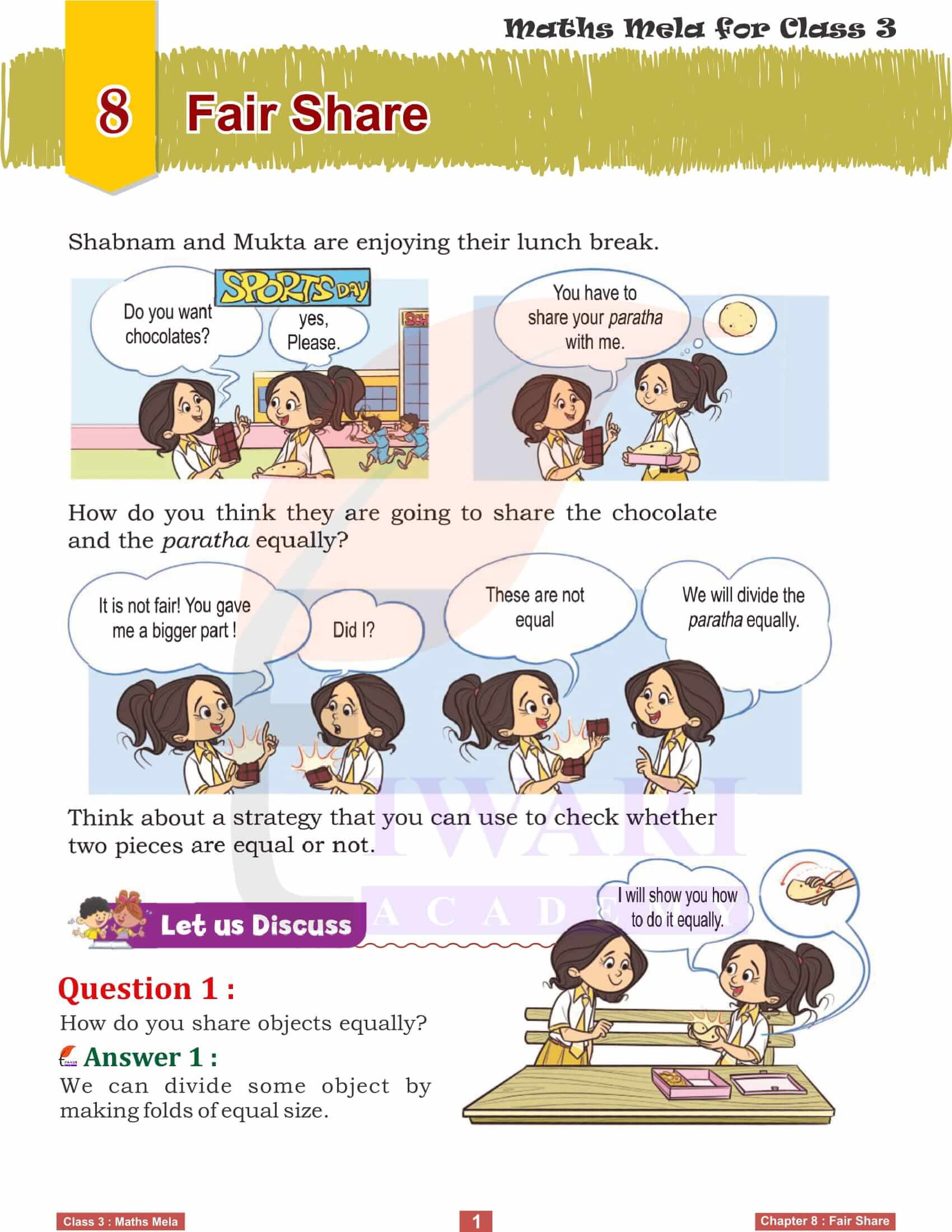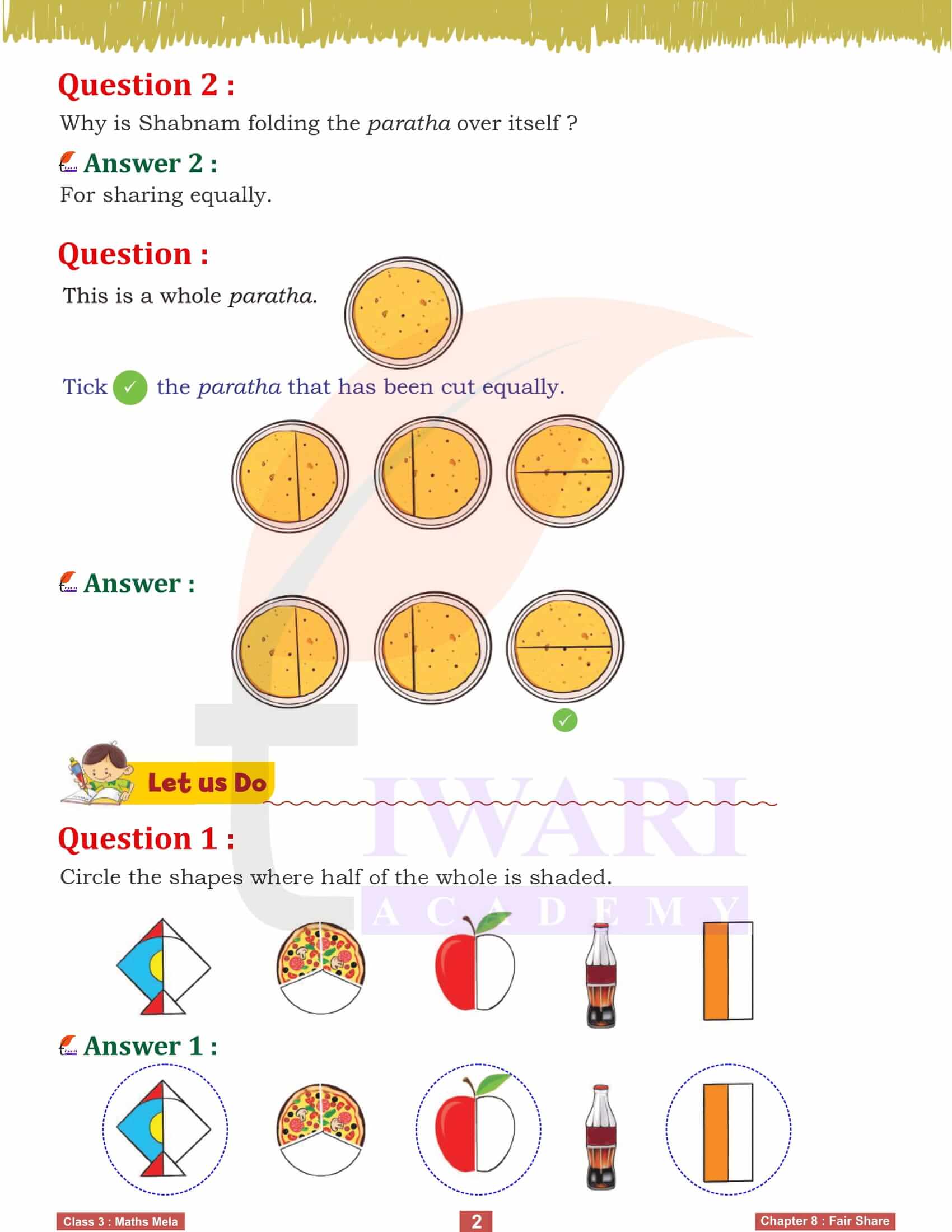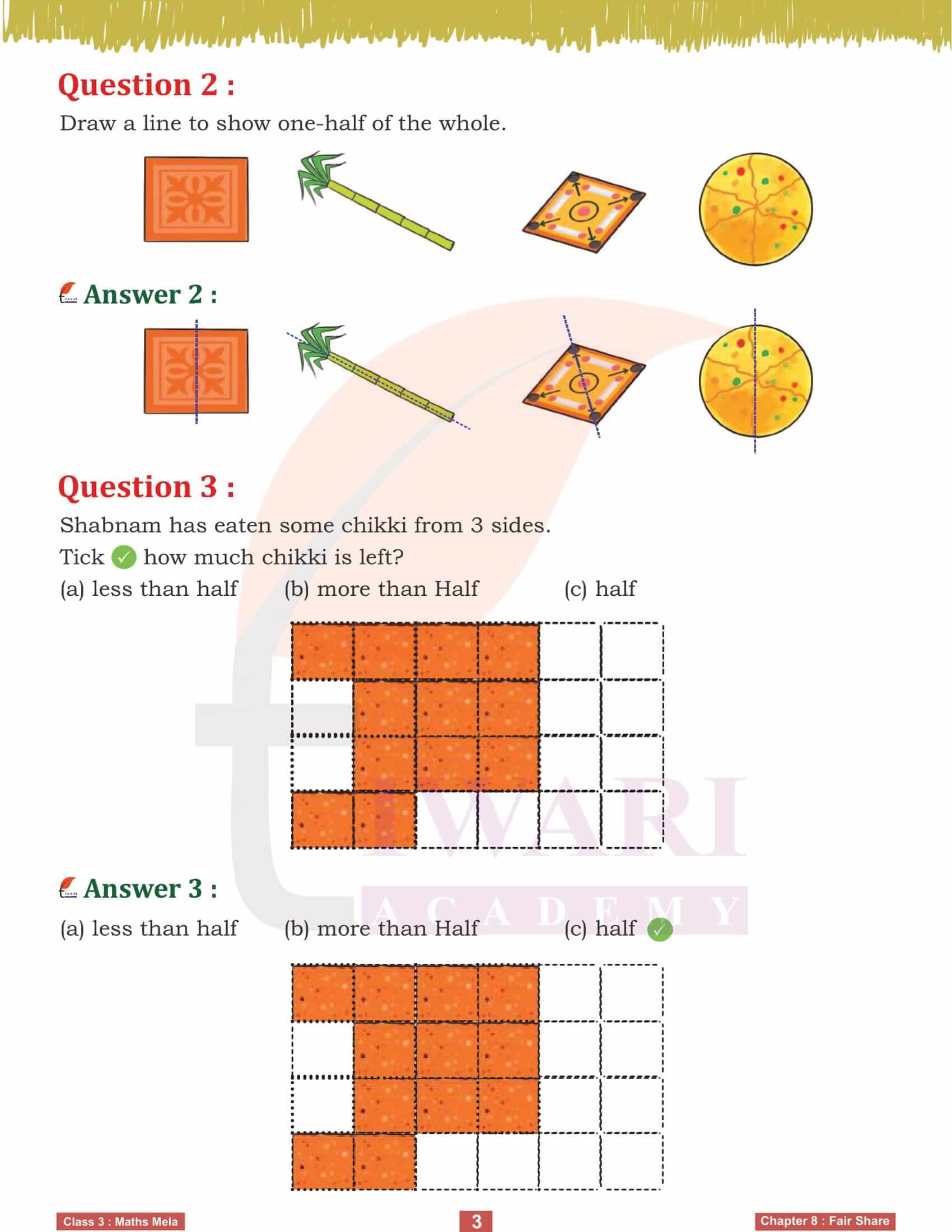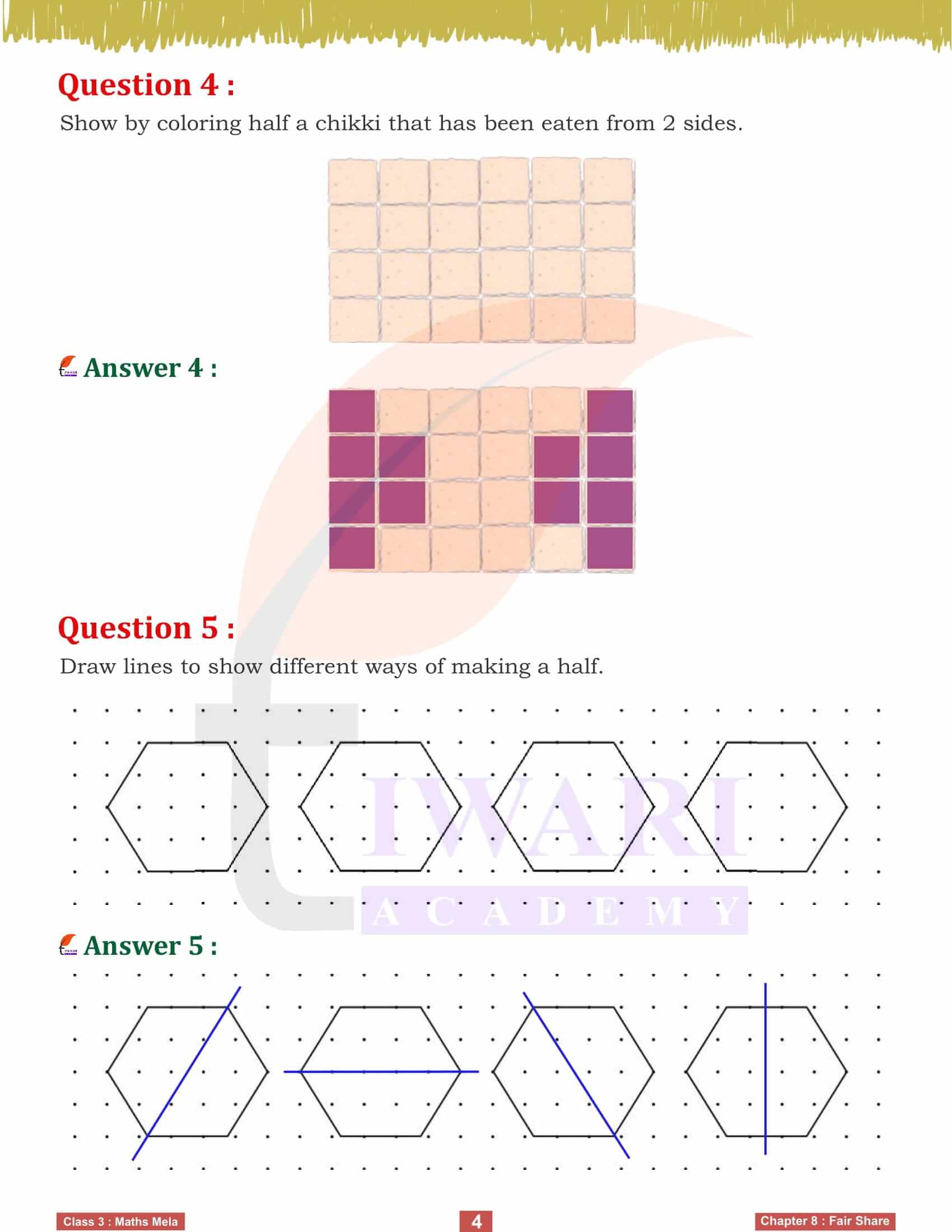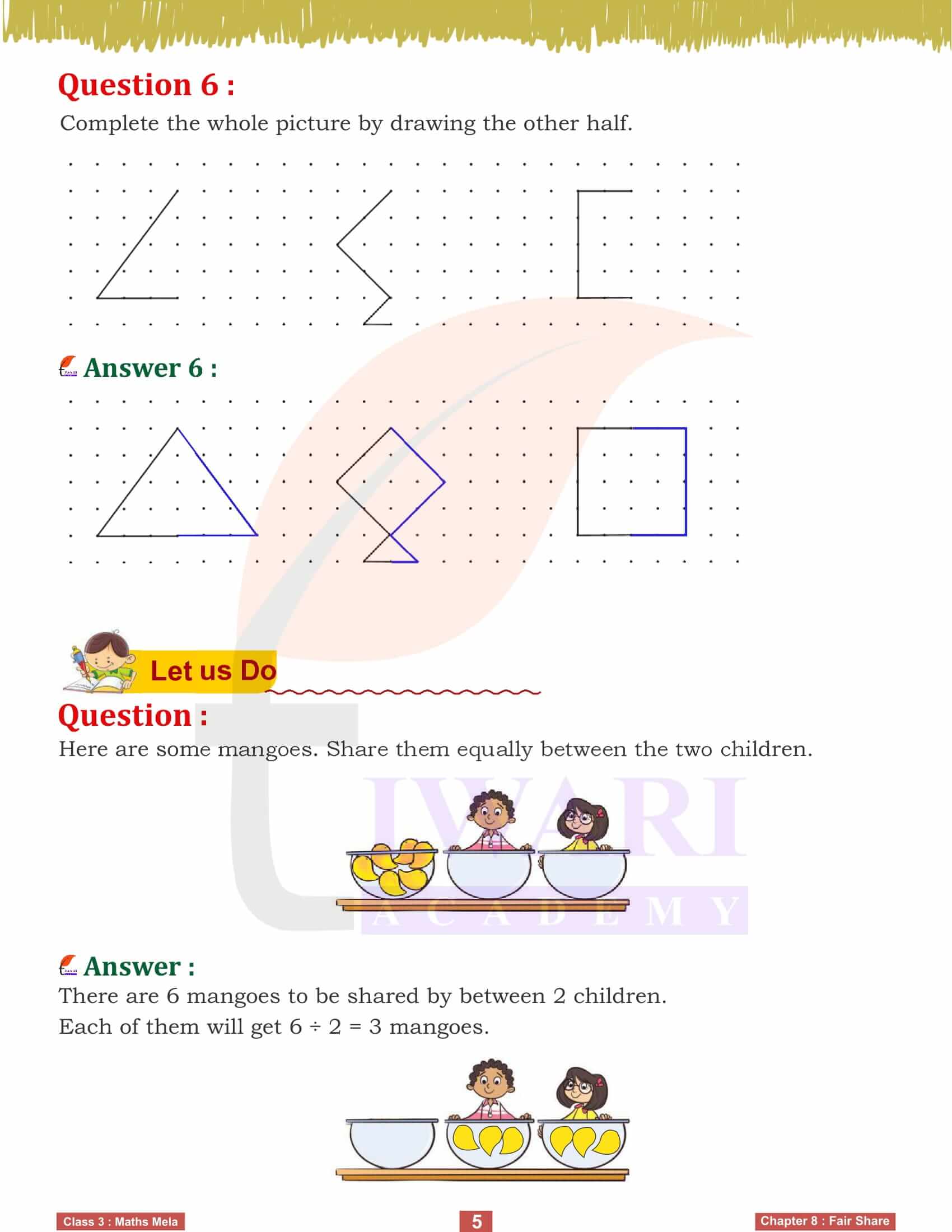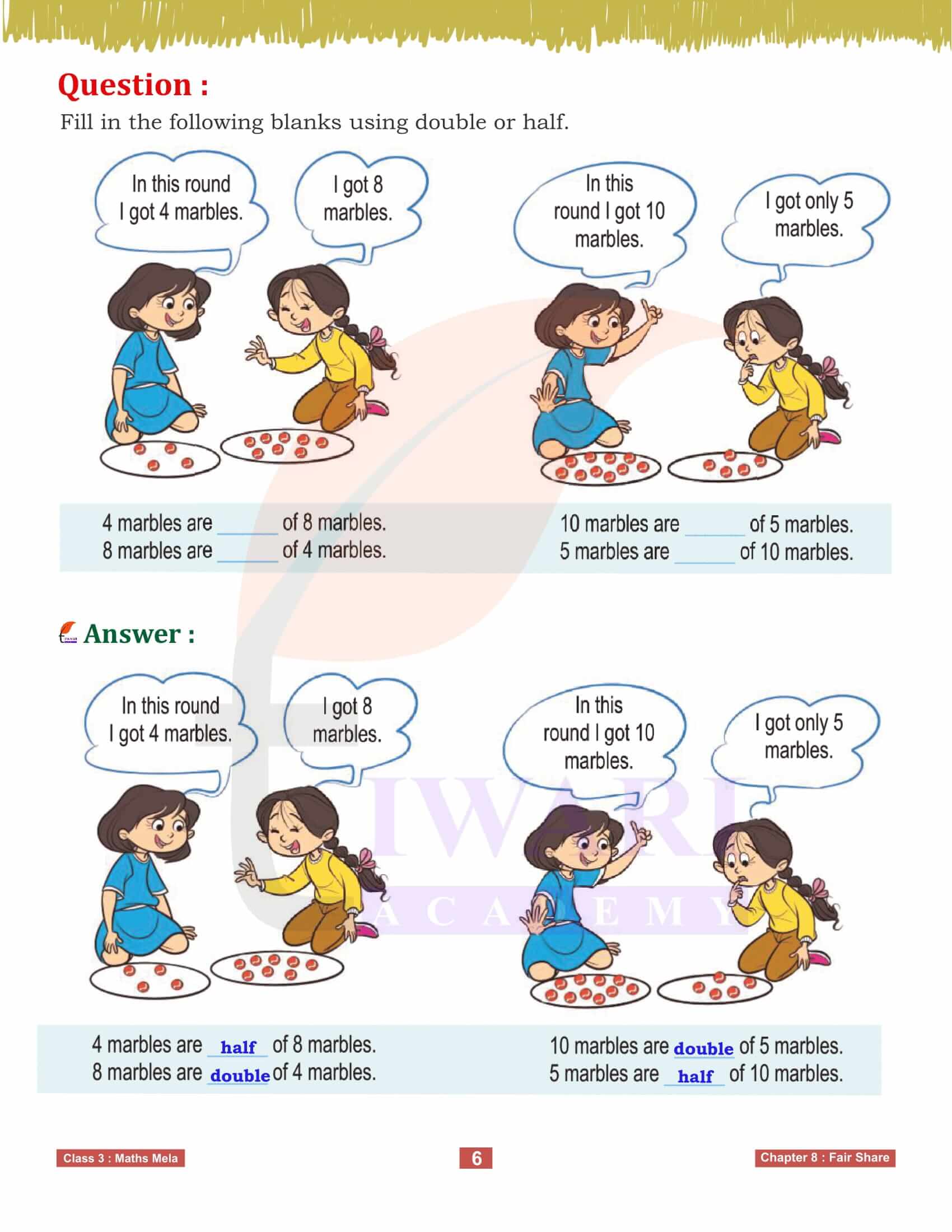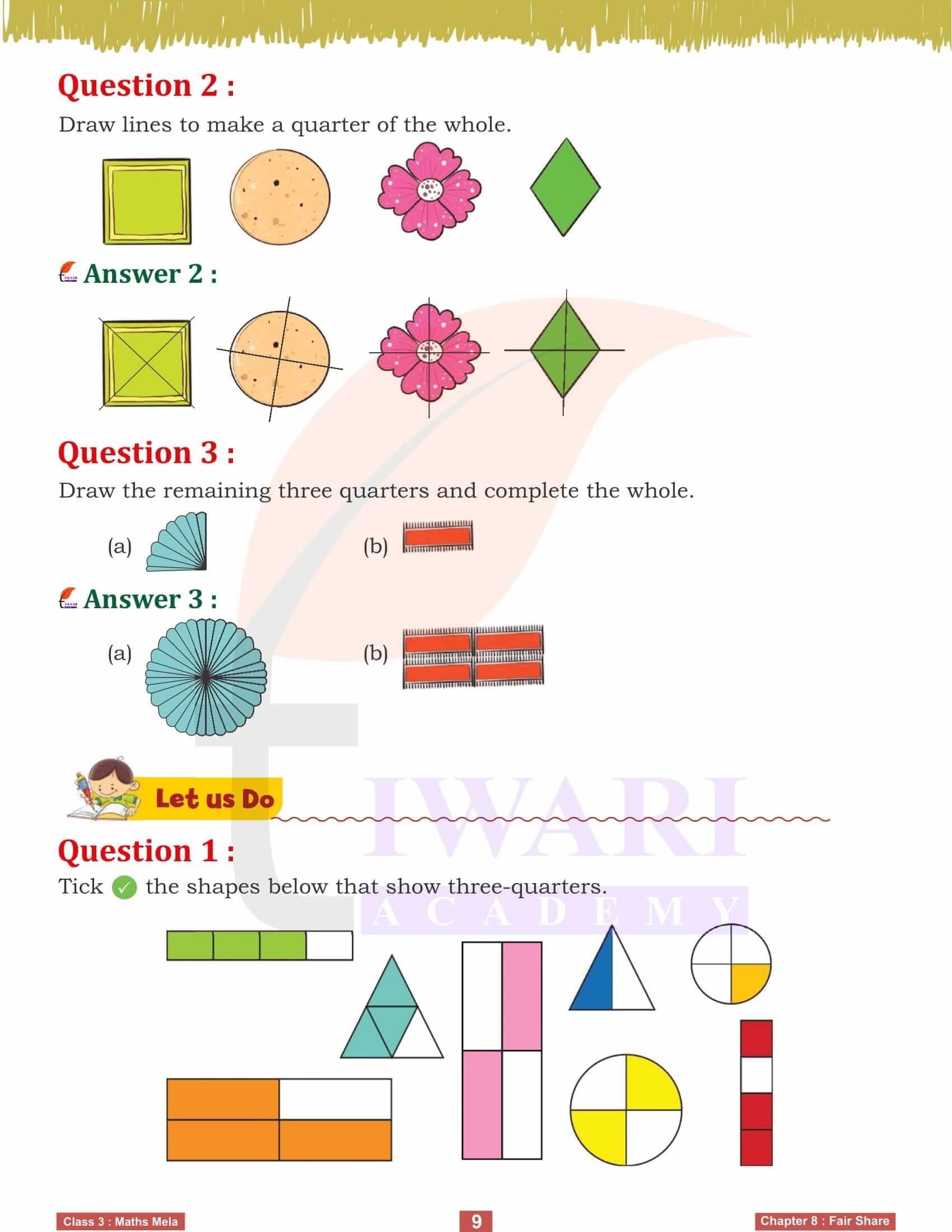NCERT Solutions for Class 3 Maths Mela Chapter 8 Fair Share in Hindi and English Medium updated for session 2025-26. In this chapter, students learn about fractions through the context of sharing. They understand the concept of equal parts and practice dividing objects and numbers into fractions. Activities involve sharing treats, dividing shapes and solving fraction-based problems, making the concept of fractions tangible and enjoyable.
Study Tricks for Class 3 Maths
Chapter 8 Fair Share Introduction
Hello everyone! now, we are diving into Chapter 8 of our Class 3 Maths book, Fair Share. This chapter is all about understanding how to share objects and quantities equally. We will explore different strategies to divide items fairly, ensuring everyone gets their rightful portion. The concepts of halves and quarters are introduced, along with practical examples to illustrate these ideas. Through various activities and discussions, you will learn to recognize, create, and divide shapes and objects into equal parts. Let’s embark on this exciting journey of fair sharing!
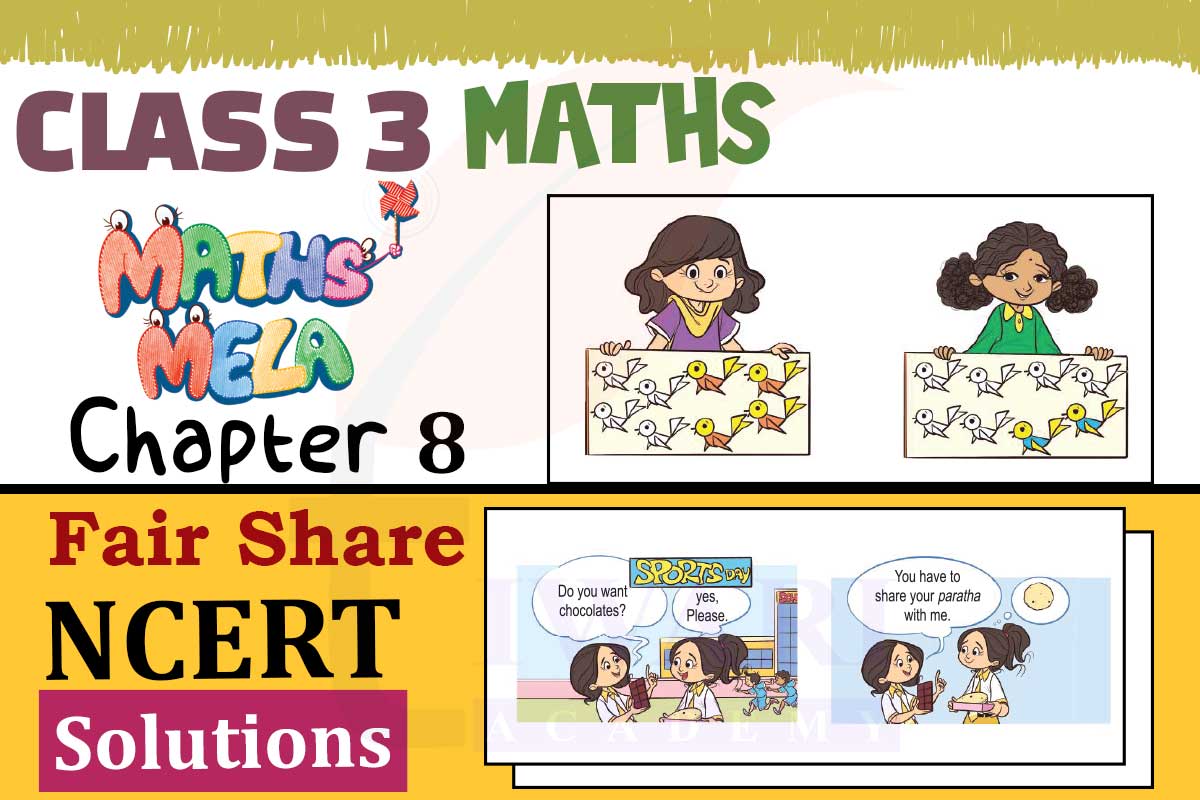
Understanding Halves
The concept of halves is fundamental in learning about fair sharing. When we divide something into two equal parts, each part is called a half. In this chapter, we begin by exploring how to recognize halves in different shapes and objects. For example, folding a rectangular sheet of paper into two equal parts shows us a clear visual representation of halves. We also discuss everyday scenarios, like sharing a paratha or a chocolate bar, to understand how we can ensure each person gets an equal share. Through hands-on activities, you will practice dividing various items into halves and verifying their equality.
Exploring Quarters through class 3 Maths chapter 8
Moving beyond halves, we delve into quarters. Dividing something into four equal parts gives us quarters, with each part being one-quarter of the whole. This chapter encourages you to explore quarters through activities like folding a square piece of paper into four equal sections. You will also learn to identify and color quarters in different shapes. By drawing and dividing objects into quarters, you will gain a deeper understanding of how division into smaller equal parts works. This section builds on the knowledge of halves and extends it to a more complex division.
Real-Life Applications
Fair sharing is not just a mathematical concept; it has practical applications in everyday life. The chapter includes stories and examples, such as dividing a mango tree, a solar lamp, and a woolen blanket between two brothers. These scenarios help you think critically about fairness and equality in sharing resources. You will discuss whether the proposed methods of sharing are fair and brainstorm better ways to divide the items equally. This section emphasizes the importance of fairness and equity in various aspects of life, encouraging you to apply these principles beyond the classroom.
Activities and Exercises
The chapter 8 is filled with engaging activities and exercises to reinforce the concepts of halves and quarters. You will draw lines to show halves and quarters, color parts of shapes to represent fractions, and complete pictures by adding missing halves or quarters. These hands-on activities are designed to make learning interactive and fun. By participating in these exercises, you will develop a strong foundation in understanding and creating equal parts. The activities also encourage collaboration and discussion, helping you learn from each other and build a deeper understanding of fair sharing.
Teacher’s Guidance
Throughout the chapter, teacher’s notes provide valuable guidance on how to facilitate learning. These notes suggest using paper folding to demonstrate halves and quarters, encouraging precise expressions of fractions like one-half and one-quarter. Teachers are advised to engage students in discussions about fairness and equality, using real-life examples to make the concepts relatable. The notes also emphasize the importance of hands-on activities and visual aids in teaching fractions. With the teacher’s support and interactive learning methods, you will gain a comprehensive understanding of fair sharing.
Conclusion and Reflection
As we conclude this chapter, it’s important to reflect on what we’ve learned about fair sharing. We’ve explored the concepts of halves and quarters, engaged in practical activities, and discussed real-life applications. Fair sharing is a crucial skill, not just in mathematics but in everyday interactions and resource distribution. By understanding and practicing these concepts, you will be better equipped to ensure fairness and equality in various situations. Let’s continue to apply these principles in our lives, striving for fairness and justice in everything we do.
Related Links
